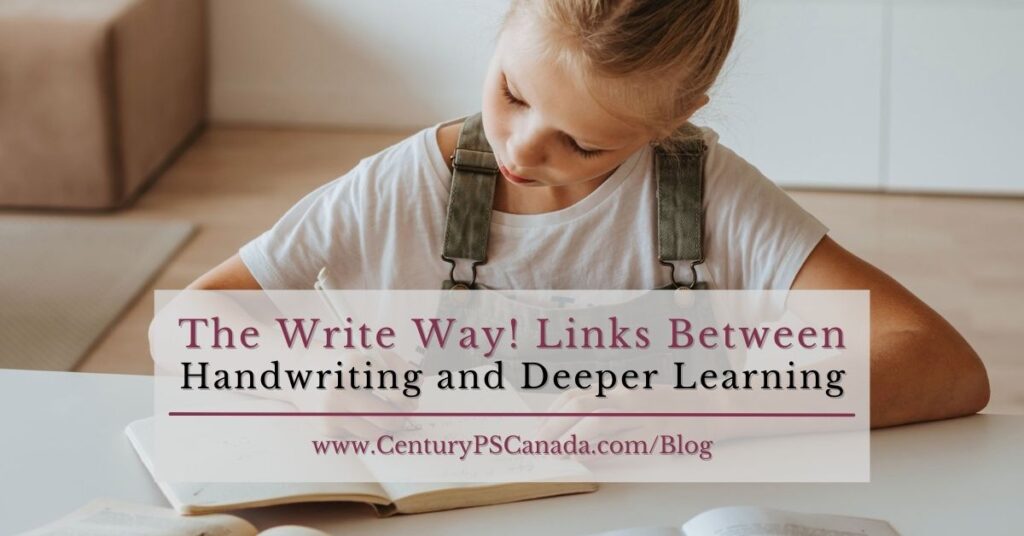With technology becoming more ingrained in our everyday lives, the act of writing by hand might seem like a fading skill. However, past research has continuously shown that putting pen to paper has far-reaching benefits, especially for young minds!
In this blog, we’ll explore the various connections between handwriting and memory and how writing by hand can impact your child’s learning.
The Magic of Handwriting (for the Brain)
Researchers have found that the act of physically writing by hand engages different parts of the brain compared to typing on a keyboard. According to a study published in the Frontiers in Psychology journal (Mueller & Oppenheimer, 2014), students who took handwritten notes during lectures demonstrated better conceptual understanding and retention compared to those who typed their notes.
Unlike typing, which often involves repetitive finger movements, handwriting requires a more intricate coordination between the hand and the brain. The process of forming letters, words, and sentences manually stimulates neural pathways associated with spatial awareness, motor skills, and memory. It also forces the brain to process the information at a slower pace, allowing for better comprehension and analysis.
In summary, writing by hand requires the writer to actively think about the content, rephrase it in their own words, and physically transcribe it onto paper. This multi-sensory experience enhances the encoding of information, creating stronger connections in the brain.

(Photo by Katerina Holmes)
Memory Traces – Leaving a Lasting Memory
Memory traces, also known as engrams, are the physical or chemical changes in the brain that occur when new information is learned. The strength and distinctiveness of these memory traces play a crucial role in later recall and understanding.
The physical act of holding a pen or pencil, feeling the texture of the paper, and the intricate motor movements required to form letters and words engage multiple senses, creating a richer and more complex set of memory traces in the brain.
With the enhanced strength and distinctiveness of these memory traces, recall and understanding of the learned material improves. When individuals later attempt to retrieve the information, the more robust memory traces formed through handwriting lead to quicker and more accurate recall when compared to typing.
Putting it to Good Use: Tips for Handwriting Success
Now that we understand how and why handwriting helps with memory, let’s explore some practical tips to encourage and optimize handwriting skills for your children.
- Incorporate Writing in Daily Activities: Encourage your child to write shopping lists, thank-you notes, or short stories. Making writing a part of everyday life reinforces its importance.
- Start Early: Introducing writing tools like crayons and markers to your toddlers can help develop the basic motor skills required for handwriting.
- Provide the Right Tools: Invest in good quality pencils and paper. The tactile experience of different textures can further enhance the benefits of handwriting.
- Be Patient and Positive: Learning to write can be challenging, especially for children. Be patient and offer positive reinforcement to encourage your child. Celebrate the small achievements to boost their confidence as well!
We advocate for the benefits of handwriting, but it’s essential to recognize the role of technology in modern education as well. Typing skills are crucial for the digital age, and striking a balance between typing and handwriting is key. Consider integrating both practices into your child’s learning routine to harness the unique advantages each skill brings to the table.

(Photo by Olia Danilevich)
Since 1994, Century Private School has offered a safe, pleasant, and nurturing environment for students from Montessori preschool to high school. We are dedicated to providing first-class education to embrace the vision of our students achieving excellence through their experience at Century Private School.
Be sure to follow us on Instagram and Facebook. If you have any questions about our facilities, contact us or sign up for a private tour here!


